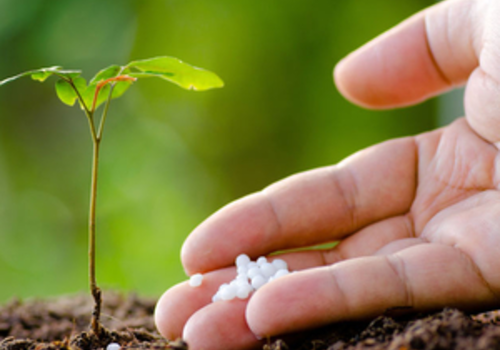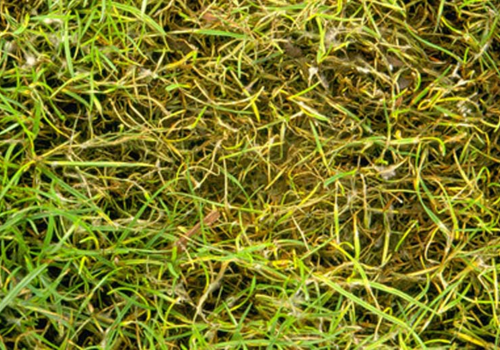Why Choose Liquid Lawn Fertiliser? Benefits, Timing & Application Tips
Feeding your lawn plays a big role in how well it grows, especially during the peak months of spring and summer. While granular products are more commonly known and used by gardeners in the UK, liquid lawn fertilisers can have drastically different results and can actually offer a faster route to a healthier, greener lawn when timed and applied correctly.
In this article, we’ll look at how liquid fertiliser works, when it’s most useful, and how to apply it properly, based on what actually works in UK gardens and not just what’s printed on the back of the bottle.
What is Liquid Lawn Fertiliser?
Liquid lawn fertiliser is a water-soluble feed that’s applied using a watering can, hose-end sprayer or knapsack sprayer. Unlike granular feeds, which break down over time, liquids deliver nutrients directly to the leaf and root zone, which provides a much faster uptake. That means you’ll usually see visible improvements within days, rather than waiting weeks.
Liquid feed is particularly useful when your lawn needs a quick boost after heavy use, periods of drought, or a rough winter. And because it’s applied in liquid form, the nutrients are evenly spread, which helps avoid patchy areas or clumping that can be common with granular fertilisers.
Liquid lawn fertiliser is designed to support strong green growth during the active growing season and is especially useful as part of a wider lawn care plan that includes seasonal mowing, watering, and occasional feeding.
The Key Benefits of Liquid Fertiliser for Lawns
One of the biggest advantages of using a liquid fertiliser is how quickly it takes effect. Because the nutrients are delivered in liquid form, they’re taken up by the grass almost straight away, so you tend to see results much faster than with traditional granular feeds.
Even coverage is another benefit. Whether you’re using a watering can or a sprayer, it’s much easier to get an even application across the whole lawn, which is particularly helpful if you’ve got patches that struggle or if you’re feeding after a period of stress like drought or heavy wear.
Liquid fertiliser, on the whole, gives you more control. You can feed just the sections that need a boost, rather than treating the whole lawn, and you can work it into your regular lawn care routine without much hassle. Some gardeners use it alongside granular fertilisers throughout the year; you just need to space the applications out to avoid overfeeding.
When to Apply Liquid Lawn Fertiliser in the UK
The best time to use a liquid lawn fertiliser is during the active growing season, which is typically from April to June, and then again in late summer through to early autumn. These are the periods when your lawn is naturally growing and can make the most of the nutrient boost.
While liquid feed is great for your lawn, it’s always best to try and avoid applying it in extremes, like during frosty spells, waterlogged conditions, or in the middle of a heatwave. It’s also worth keeping an eye on the lawn itself and looking out for signs of fading colour, dry patches, or slow growth, which are often telltale signs it’s time for a feed.
As a general guide, most lawns can be fed every four to six weeks when the grass is actively growing. Just be sure to follow the specific instructions on the bottle, especially when combining it with other lawn treatments.
Liquid vs Granular: Which is Right for You?
Both liquid and granular fertilisers have their place, and the right choice depends on what your lawn needs and how hands-on you want to be. Liquid feed is ideal when you’re after fast results, especially if your grass is looking tired or patchy and you want a quick boost. It’s also good for topping up between main feeds or targeting specific areas that need a bit of extra help.
Granular fertiliser, on the other hand, is better suited for long-term feeding. It breaks down slowly and releases nutrients over several weeks, which means you don’t have to apply it as often. That makes it a good option if you prefer a more hands-off approach or want to feed the whole lawn at once and let it take care of itself.
Many gardeners choose to use both during the year. A granular feed in early spring, followed by occasional liquid top-ups through summer, can keep the lawn looking green without overdoing it. Just make sure you leave enough time between feeds so you’re not overloading the grass.
Common Mistakes to Avoid When Using Liquid Fertiliser
It can be really easy to overdo it with liquid fertiliser, especially if you’re keen to get fast results. One of the most common mistakes is applying just before heavy rain, as this can actually wash the feed away before it’s had a chance to soak in. Always check the forecast and aim for a dry 24-hour window after application. Easier said than done with the unpredictable UK weather, but do your best to find a decent window.
Another issue is overapplication. More isn’t better. Too much fertiliser can scorch your lawn or cause excessive growth that’s hard to manage, so be sure to stick to the recommended dilution rates and timings on the label. It’s also important not to apply too often. Even though liquid feeds act fast, your lawn still needs time to absorb and respond.
Finally, avoid treating the lawn without checking what it actually needs. If your grass is growing well and looks healthy, it may not need a feed. Watch for signs like yellowing, thinning, or poor growth before reaching for the bottle.
Frequently Asked Questions
Do I need to water in liquid lawn fertiliser?
Not always. Most liquid feeds are designed to be absorbed directly through the leaves, especially if applied during dry conditions. But if the instructions say to water it in, especially in warmer weather, it’s best to follow that advice to avoid any risk of scorching.
Can I use liquid fertiliser on a new lawn?
Yes, but timing matters. Wait until the grass is well-established, usually after the first couple of mows, before applying any fertiliser. Liquid feed can help strengthen young grass, but too much too soon may do more harm than good.
Will liquid fertiliser green up my lawn quickly?
In most cases, yes. Liquid fertiliser acts fast, so you’ll usually notice a colour improvement within a few days. That said, results still depend on the time of year, weather conditions, and how healthy your lawn is to begin with.
Can I mix liquid and granular fertilisers?
You can, but not at the same time. Many gardeners use both across the season. Granular for longer-term feeding and liquid for quick fixes or top-ups. Just be sure to space out applications to avoid overfeeding.


